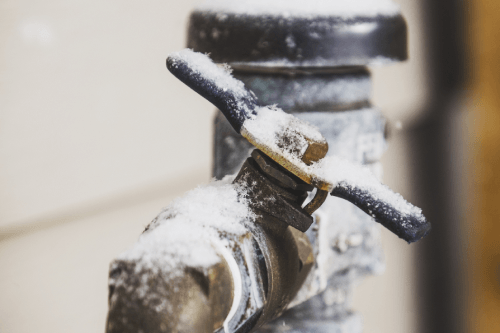Advice for Avoiding Frozen Pipes in Winter: Specialist Insights
Advice for Avoiding Frozen Pipes in Winter: Specialist Insights
Blog Article
We have unearthed this post relating to Helpful Tips to Prevent Frozen Pipes this Winter below on the net and believe it made good sense to discuss it with you over here.

Winter can damage your pipes, specifically by freezing pipelines. Below's just how to prevent it from taking place and what to do if it does.
Introduction
As temperature levels decline, the risk of icy pipes boosts, possibly resulting in costly fixings and water damage. Comprehending just how to prevent frozen pipelines is crucial for house owners in cool environments.
Avoidance Tips
Insulating prone pipelines
Cover pipelines in insulation sleeves or make use of warmth tape to protect them from freezing temperatures. Focus on pipes in unheated or outside locations of the home.
Home heating techniques
Maintain indoor areas appropriately warmed, specifically locations with pipes. Open cabinet doors to allow cozy air to flow around pipelines under sinks.
Exactly how to identify icy pipelines
Try to find reduced water flow from taps, uncommon odors or sounds from pipelines, and visible frost on revealed pipelines.
Long-Term Solutions
Structural changes
Think about rerouting pipes far from exterior wall surfaces or unheated areas. Include extra insulation to attic rooms, basements, and crawl spaces.
Updating insulation
Invest in premium insulation for pipelines, attic rooms, and wall surfaces. Correct insulation aids keep constant temperatures and minimizes the danger of icy pipelines.
Protecting Outside Pipes
Yard hose pipes and outdoor taps
Separate and drain garden tubes before winter season. Mount frost-proof faucets or cover outdoor taps with insulated caps.
Recognizing Frozen Pipelines
What triggers pipes to freeze?
Pipelines freeze when revealed to temperatures listed below 32 ° F (0 ° C) for extended durations. As water inside the pipelines freezes, it increases, putting pressure on the pipe wall surfaces and potentially triggering them to break.
Threats and problems
Icy pipelines can bring about water supply disruptions, residential property damages, and costly repair work. Burst pipes can flooding homes and create substantial structural damages.
Indicators of Frozen Water Lines
Identifying icy pipes early can stop them from rupturing.
What to Do If Your Pipes Freeze
Immediate activities to take
If you think icy pipes, maintain faucets available to soothe stress as the ice thaws. Make use of a hairdryer or towels taken in hot water to thaw pipes gradually.
Conclusion
Avoiding frozen pipelines calls for positive steps and fast reactions. By recognizing the causes, indications, and preventive measures, house owners can shield their pipes during cold weather.
5 Ways to Prevent Frozen Pipes
Drain Outdoor Faucets and Disconnect Hoses
First, close the shut-off valve that controls the flow of water in the pipe to your outdoor faucet. Then, head outside to disconnect and drain your hose and open the outdoor faucet to allow the water to completely drain out of the line. Turn off the faucet when done. Finally, head back to the shut-off valve and drain the remaining water inside the pipe into a bucket or container. Additionally, if you have a home irrigation system, you should consider hiring an expert to clear the system of water each year.
Insulate Pipes
One of the best and most cost-effective methods for preventing frozen water pipes is to wrap your pipes with insulation. This is especially important for areas in your home that aren’t exposed to heat, such as an attic. We suggest using foam sleeves, which can typically be found at your local hardware store.
Keep Heat Running at 65
Your pipes are located inside your walls, and the temperature there is much colder than the rest of the house. To prevent your pipes from freezing, The Insurance Information Institute suggests that you keep your home heated to at least 65 degrees, even when traveling. You may want to invest in smart devices that can keep an eye on the temperature in your home while you’re away.
Leave Water Dripping
Moving water — even a small trickle — can prevent ice from forming inside your pipes. When freezing temps are imminent, start a drip of water from all faucets that serve exposed pipes. Leaving a few faucets running will also help relieve pressure inside the pipes and help prevent a rupture if the water inside freezes.
Open Cupboard Doors
Warm your kitchen and bathroom pipes by opening cupboards and vanities. You should also leave your interior doors ajar to help warm air circulate evenly throughout your home.

I came across that piece about How to Prevent Your Pipes From Freezing when doing a lookup on the search engines. For those who enjoyed our post kindly consider to share it. Thanks a lot for your time spent reading it.
Call Today Report this page